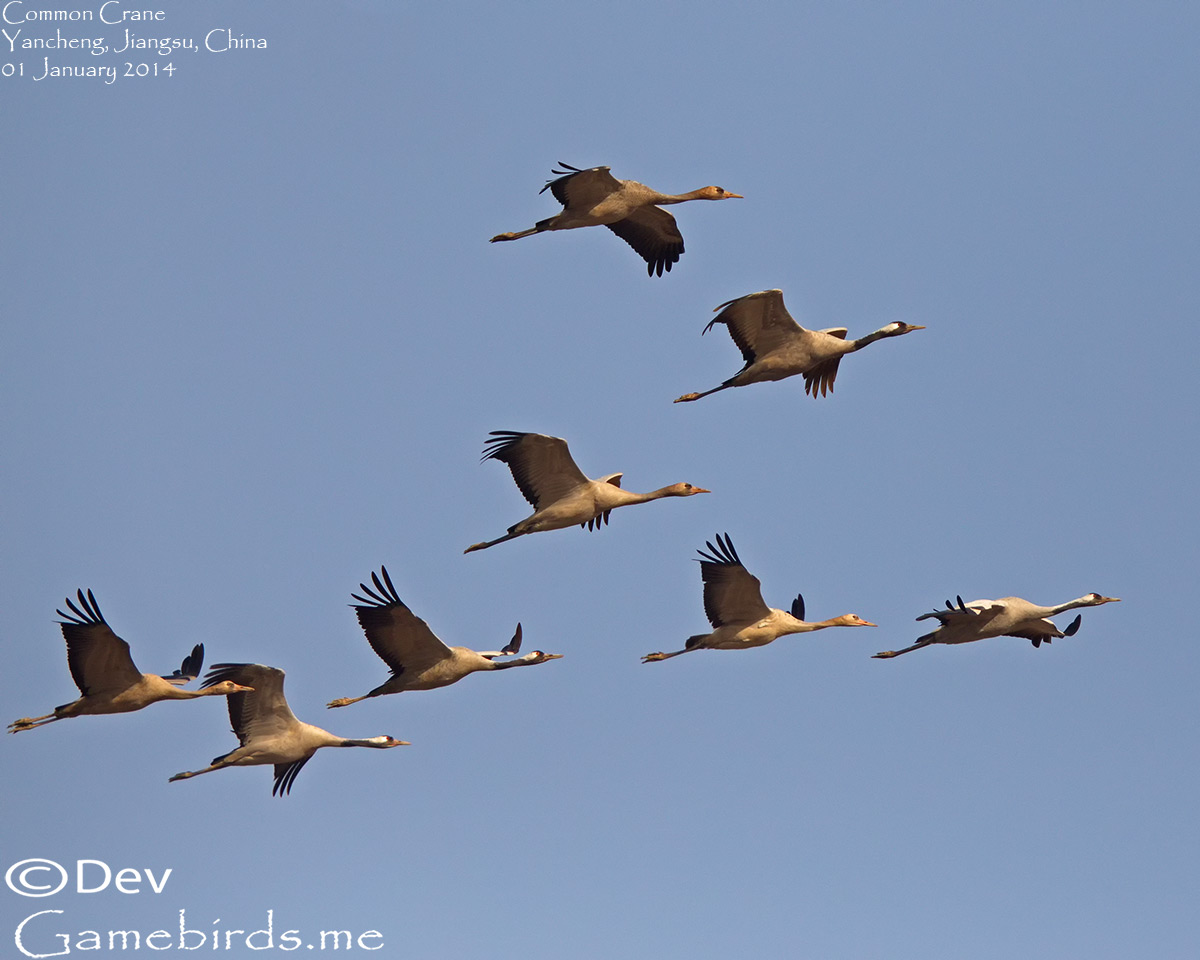
I was in a dilemma to finalize the location between Poyang lake and Yancheng. Thanks to Xie Kai, whom I met at Yangkou last year was also visiting Yancheng at the same time, the zen of a local birder is always right on, so I decided to do the first birding trip of 2014 at Yancheng along with him.
Red-crowned Cranes, the first thing that comes to my mind when I hear Yancheng, Red-crowned Cranes are the largest among the East Asian Cranes and one of the rarest crane in the world which also has a significant importance in the Chinese Culture. Yancheng is a very important wintering ground for this species and the objective of the trip is to observe the species in its wintering grounds.
Eventhough, Yancheng is commonly known for the Red-crowned Cranes, the precise place is Xinyang village which is 42kms north west of Yancheng. With the increase in independent birders recently, I will post the birding locations and other aspects at the end of the trip report. Xinyang port is about 350kms from Shanghai, which is about 4 hours’ drive. The drive was quiet in the early morning when I started at 4 AM on January 1st. The highlight of the road trip was the no. of Hoopoe’s on the highway. From Nantong till Xinyang, I counted 32 Hoopoe’s. It was 8.30 am when I checked in at the hotel at Xinyang. I immediately met with Xie Kai and Roger Theo Timmermann (German birder based in Shanghai). We quickly dumped few dumplings to our belly and headed to the forest farm south of the village in search of the wintering Long-eared Owl. No signs of the owl, we tried another woodland patch east of the forest farm, no signs of the owl here too, Eurasian Siskins were in good no’s in this woodland. We decided to visit the Nature reserve. The reserve is huge with very promising habitat. The entry fee is 45rmb. The entrance of the park was very much like rest of the tourist places in China(A tourist centre, pond with captive Ducks, Goose, Stork, Swans & Cranes too). The first lifer of the day was a total surprise, it was the “Milu aka Pere David’s Deer”. A gigantic young deer, totally camouflaged among the reeds but Roger’s eyes didn’t miss it. Roger has covered lot of ground in this reserve during his previous visit and he knew a lot about the birds of the reserve. He has covered more than 18kms by foot in a single day, yep, he’s a hell of a walker.
Moving on from the Milu, the first lifer (this time it’s a bird) is an “Brown-cheeked Rail”, spotted again by Roger. The shy bird disappeared into the reeds within seconds but there were so many of them around shallow water and reeds. We moved towards the watch tower and spent some time enjoying the elevated view. Cranes, Goose, Ducks, Oriental Stork were all over the sky. We left the watch tower and moved toward the northern side of the park. This is were the Cranes flew from North, literally covering the sky, wah, spectacular sight. Common Cranes were in majority, each flock had atleast 100’s of them and the flocks keep coming.
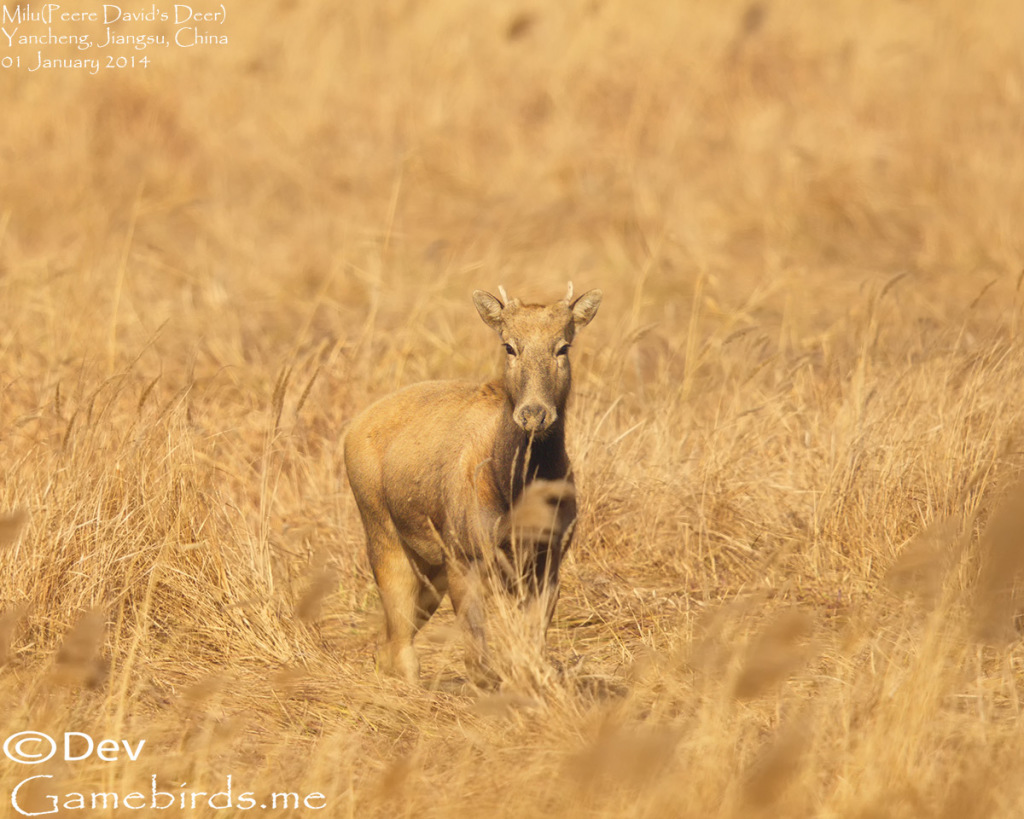
Pere David’s Deer almost invisible among the reeds
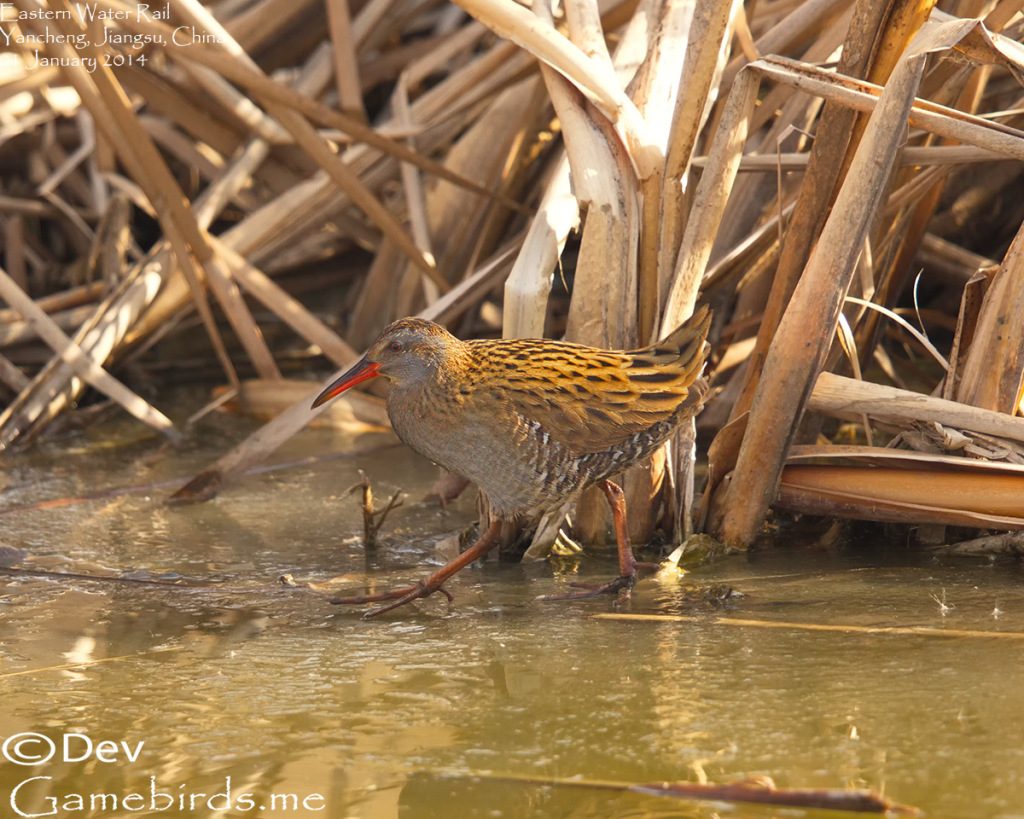
Elusive reed runner
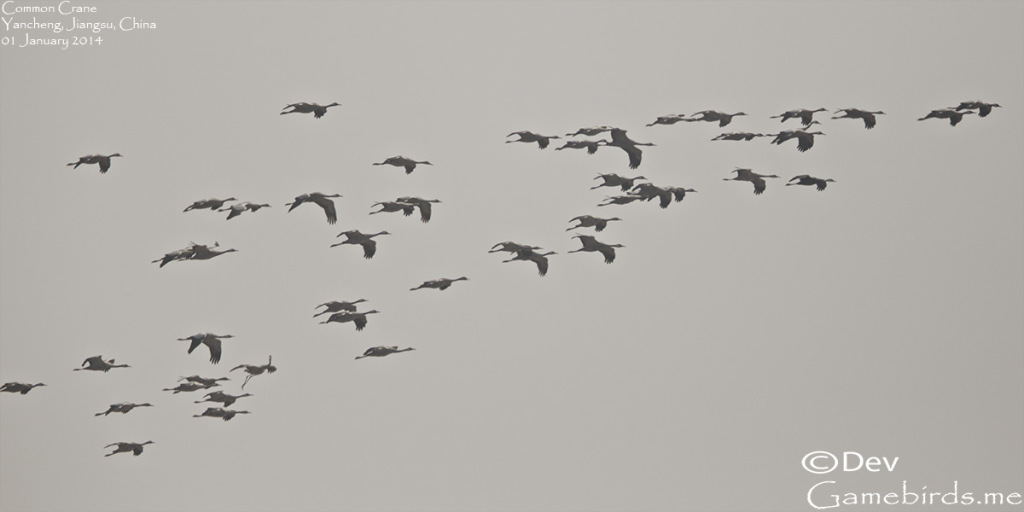
Flocks of Cranes were covering the skies all the time
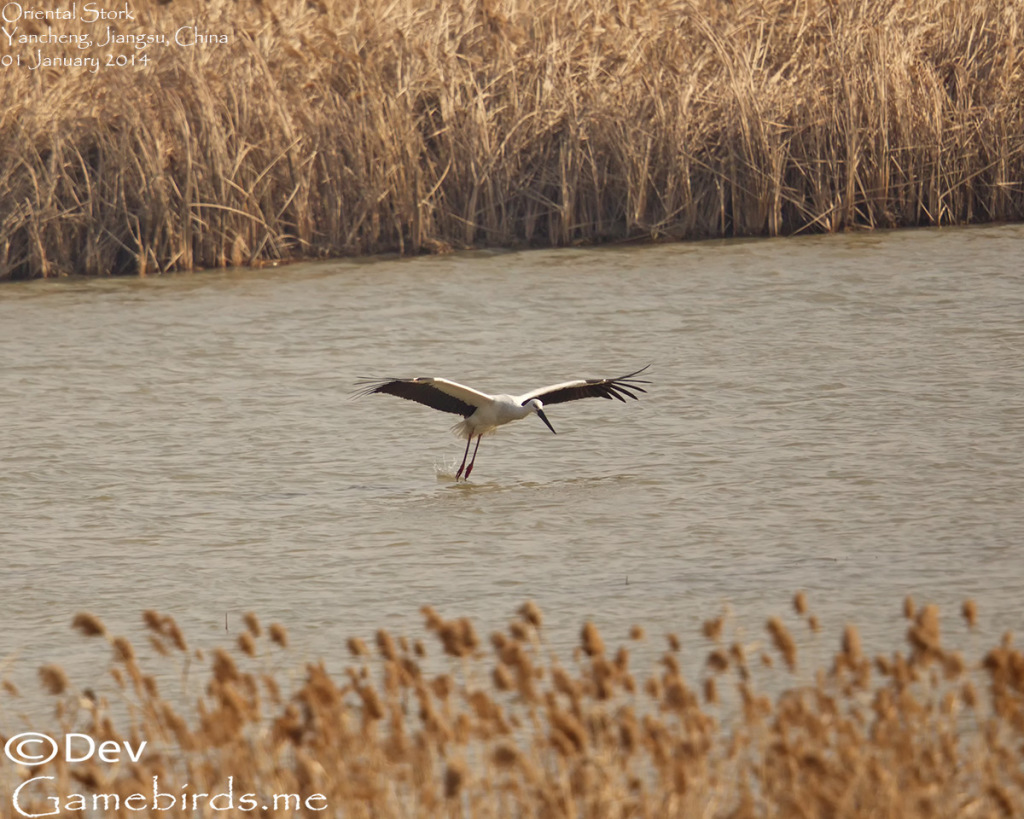
Orinetal Stork spotted from the Watch tower
Soon, I had the first sighting of the “Red-crowned Crane”, 3 of them were feeding in a grassy mudflat and took off when a car passed by. Among the ducks, Mallards were in majority followed by Chinese Spot-billed ducks, Northern Pintail, Common Teal, “Common Shelduck”.
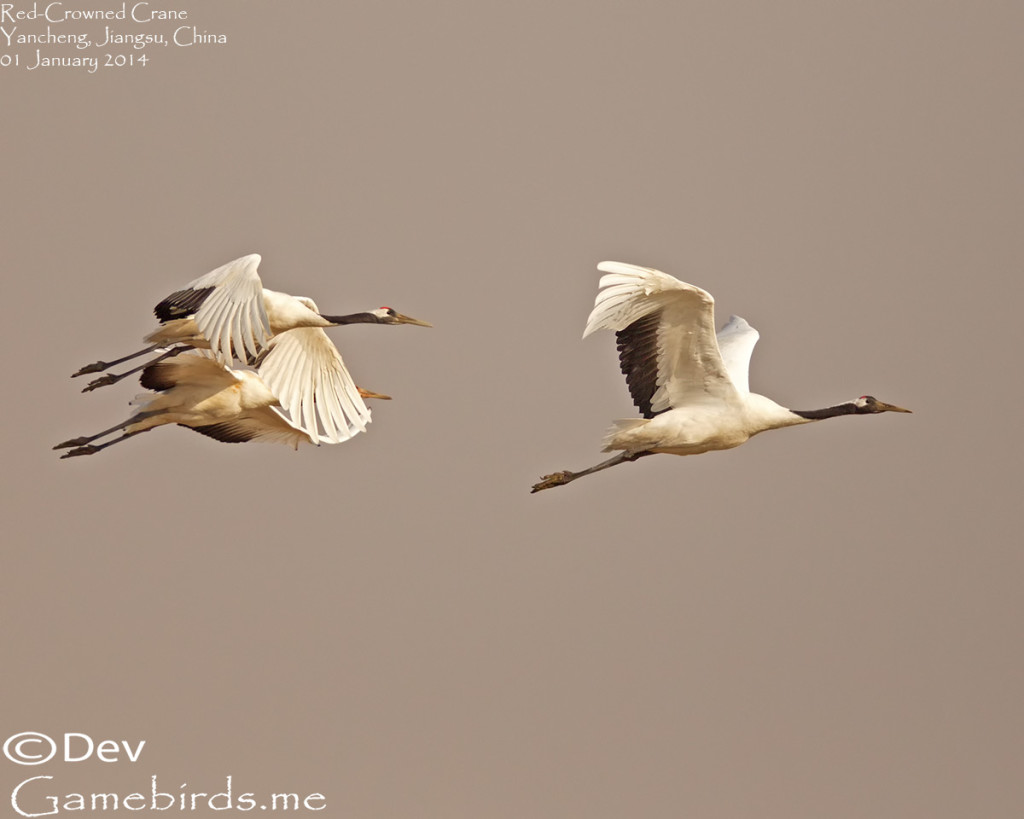
Two adults and a juvenile
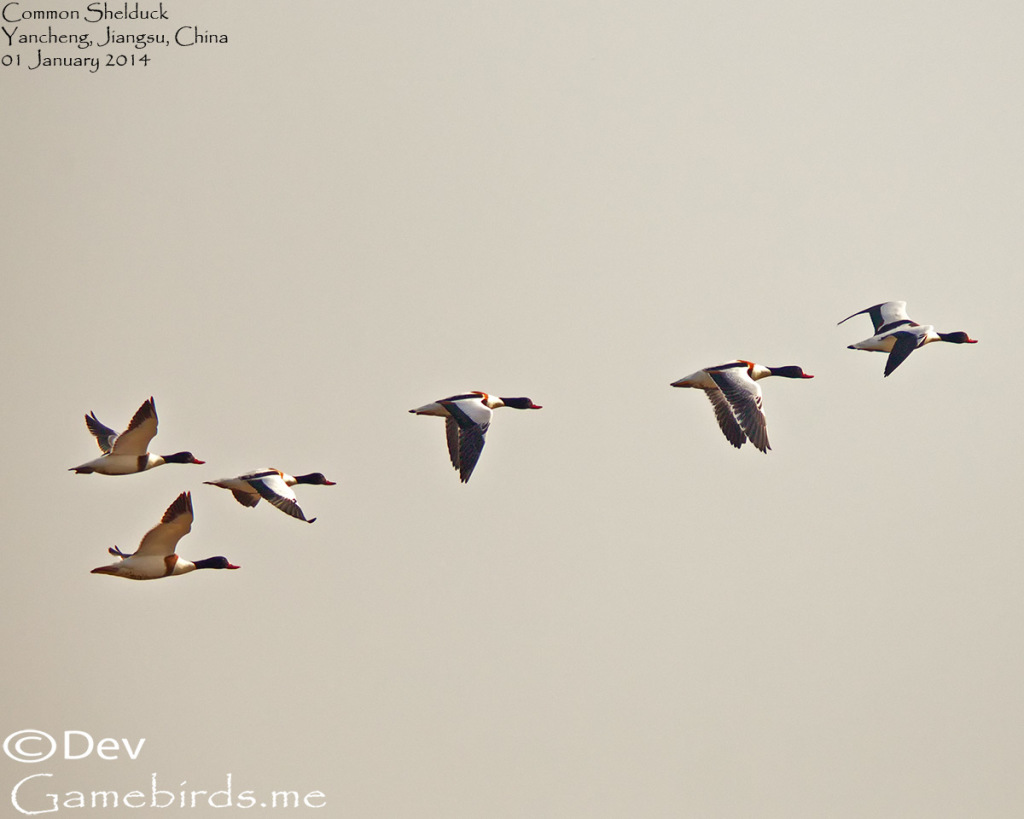
Common Shelducks were very common
The reserve has few captive birds near the visitor centre and most of the tourist crowd ends there. Occasionally people take the battery operated vehicle(comes with additional cost) and go around the reserve. We had some close views of Oriental Stork. Before a month I would have been stumbled to see the stork but I had spotted 3 birds in Shanghai in late November. Nevertheless, 3 gulls and an Oriental Stork put up good show as the Gulls tried to steal the fish from the Stork, chased the Stork for miles before disappearing in the horizon.


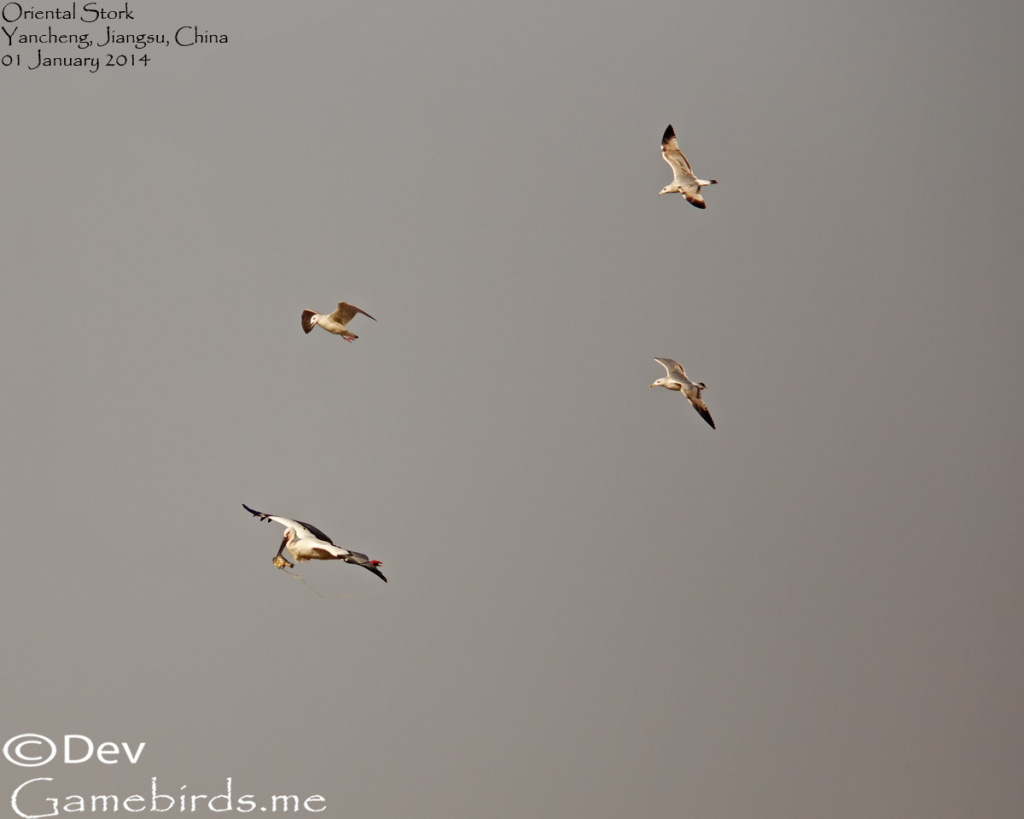
The crane flock never stopped, they just keep flying overhead and soon I spotted few Hooded Cranes among the Common Crane. 3 Crane day is fantastic so far.
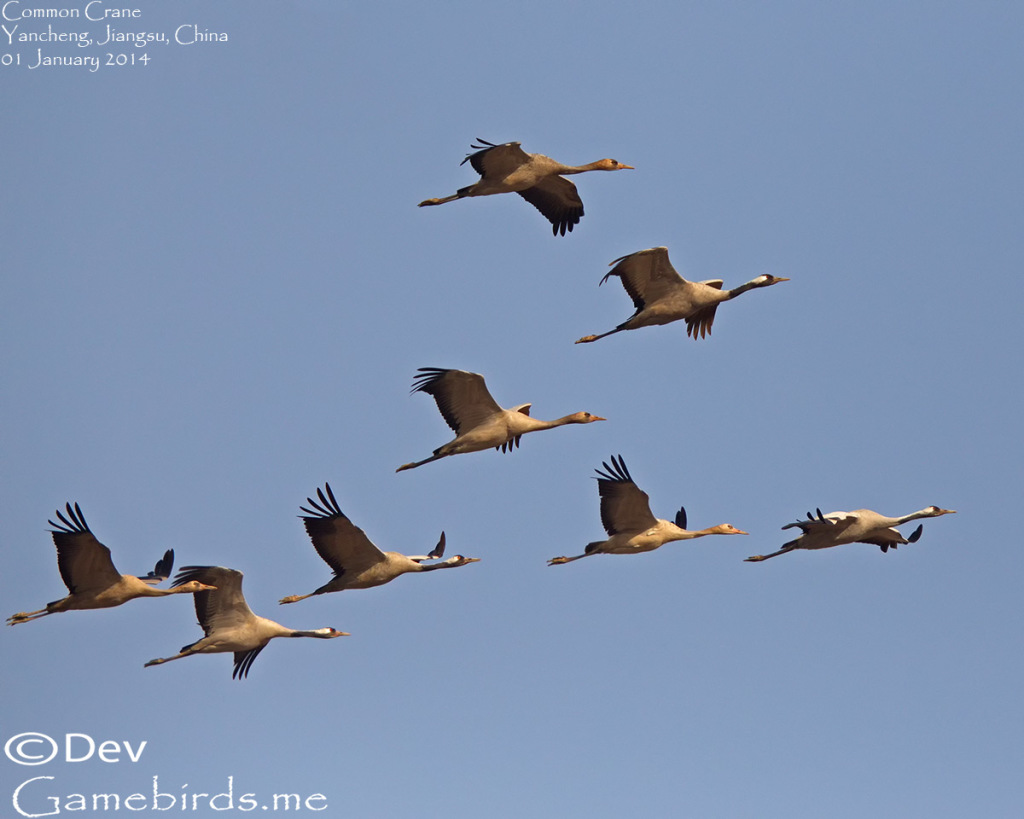
Common Crane
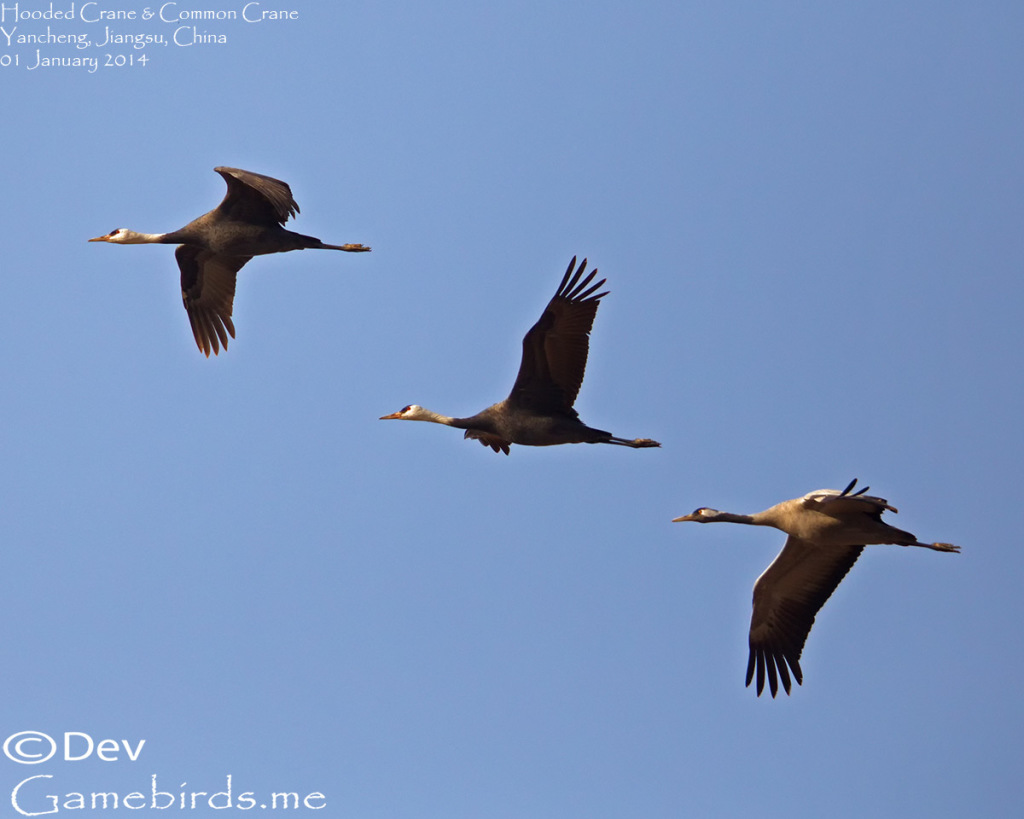
Hoods n Common

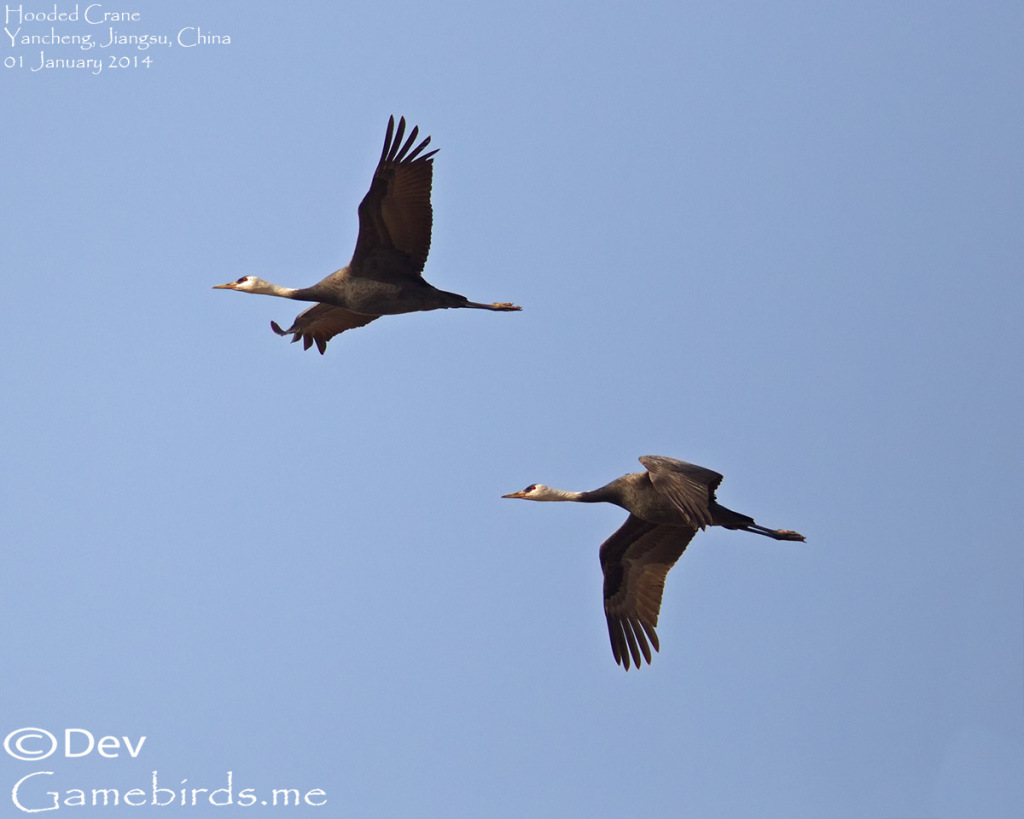
We then took a detour among the reeds, nothing special other than Chinese Blackbird, Dusky Thrush, Spotted Dove, White-Cheeked Starling, Vinous-throated Parrotbills, Yellow-throated and Rustic Buntings. We left the reserve after bursting shutters to one of the enchanting species found in China, the “Reed Parrotbill”. Two years of constant try at Nanhui and Chongming, I finally settled with few good shots. If a day comes when China has a national bird and the provinces have their provincial bird, my vote is for “Reed Parrotbill” for Shanghai.
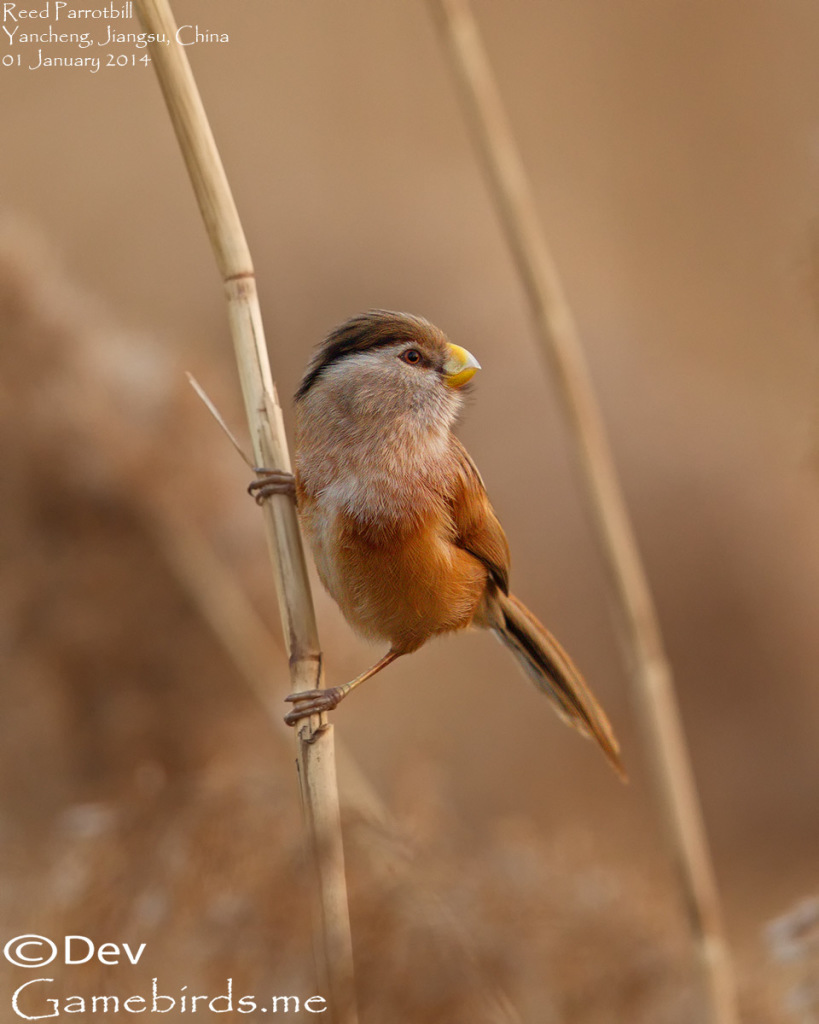
Reed Parrotbill
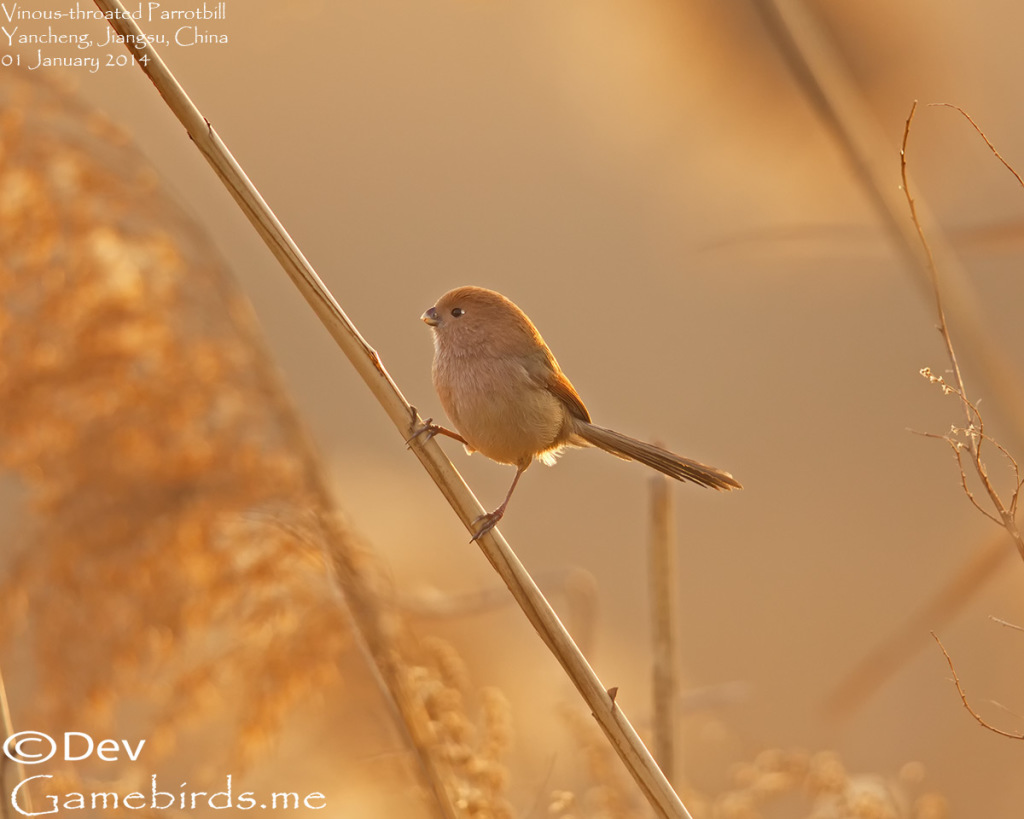
I’m a parrotbill too
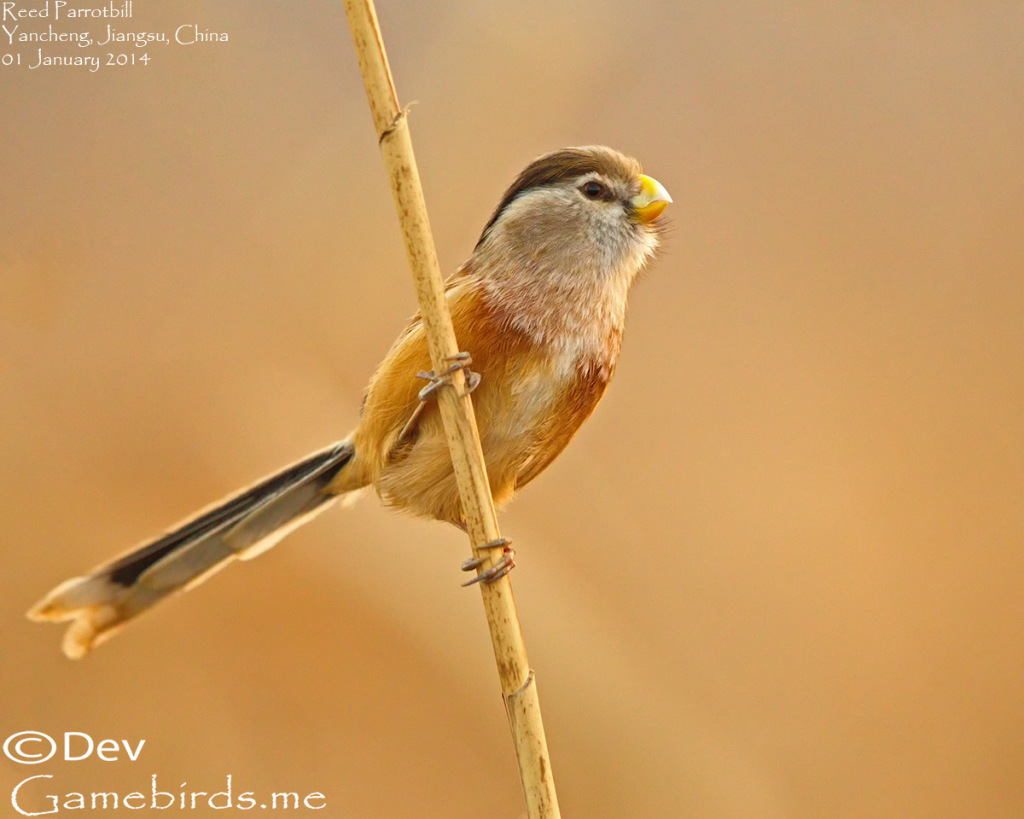
We tried one more attempt in the dark in search of the Long-eared Owl, the forest farm was eerily silent. Off to the bunk to an early rise tomorrow and get some China birdnet (鸟网) shots.
0 Comment
Great!
Well-Done,Birdman!!!
Guguu~~ LOL~~
Hanson, you should try sometime on the wild bird photography.
Thanks Mr. Shen!